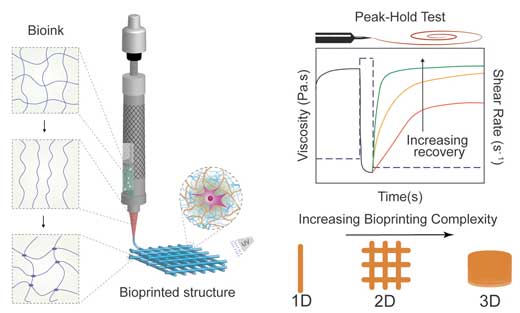3D bioprinting is an advanced additive manufacturing technique that attempts to recapitulate the native architecture of tissues through precise deposition of cell-containing hydrogel bioinks.
.
The spatiotemporal control over bioink deposition allows for improved communication between cells and the hydrogel matrix, facilitating fabrication of anatomically and physiologically relevant structures. Recent developments in hydrogel chemistries, reinforcement approaches, and crosslinking methods have expanded the applications of 3D bioprinting to pharmaceutics, regenerative medicine, and biomedical devices.
.
A multitude of 3D bioprinting techniques have been developed, but among these different approaches, extrusion-based 3D bioprinting has become a popular technique as it is easy to optimize and all its constituents are economical in price. Despite the progress in extrusion based bioprinting in the last decade, the overall process of bioprinting can still be complex and challenging to scientists and researchers who are new to this field. To resolve this obstacle, Dr. […]
Case Study: How PepsiCo achieved 96% cost savings on tooling with 3D Printing Technology
Above: PepsiCo food, snack, and beverage product line-up/Source: PepsiCo PepsiCo turned to tooling with 3D printing...





0 Comments